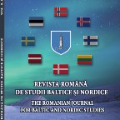The birth of minority legislation in the newly independent Finland and Estonia (1918–1920): a comparative analysis
The birth of minority legislation in the newly independent Finland and Estonia (1918–1920): a comparative analysis
Author(s): Kari ALENIUSSubject(s): Language studies, Cultural history, Political history, Ethnic Minorities Studies
Published by: Asociatia Romana pentru Studii Baltice si Nordice
Keywords: Minorities; Legislation; Finland; Estonia; Ethnic relations;
Summary/Abstract: This article analyzes how ethnic minorities were taken into account in the Finnish and Estonian constitutions, and why account was taken precisely in a certain way. At the same time, it approaches what kinds of views were presented by different political parties and interest groups, what kind of debate was being held in Parliament and how the matter was dealt with in the leading media. The outcome of the process in both countries was that exceptionally broad linguistic and cultural rights were given to minorities if the situation was compared with the rest of Europe.There were several factors behind the process. One factor was the relationship between ethnic groups in Finland and Estonia in the historical perspective. Another factor was each country’s internal debate on what kind of social order in general was to be built. The third factor was how the politics in Finland and Estonia was influenced by international trends and theories about how ethnic minorities should have been treated.
Journal: Revista Română de Studii Baltice şi Nordice
- Issue Year: 13/2021
- Issue No: 2
- Page Range: 61-84
- Page Count: 24
- Language: English

